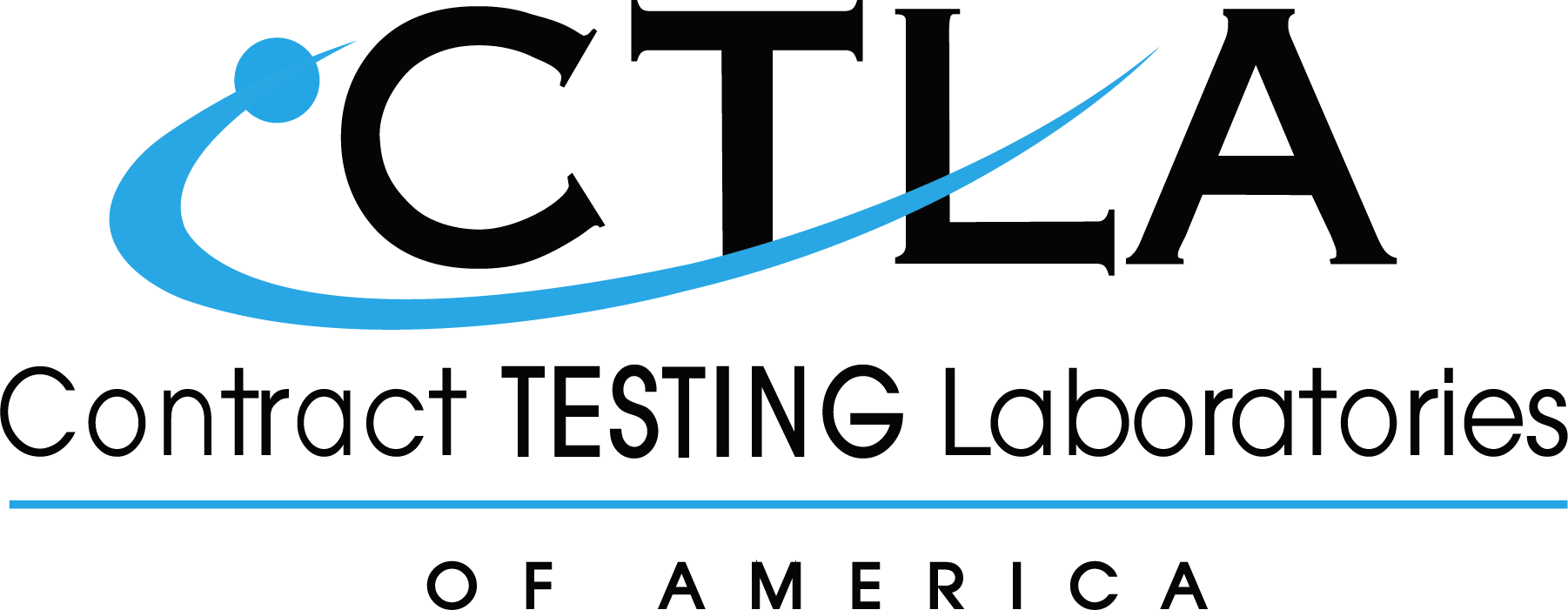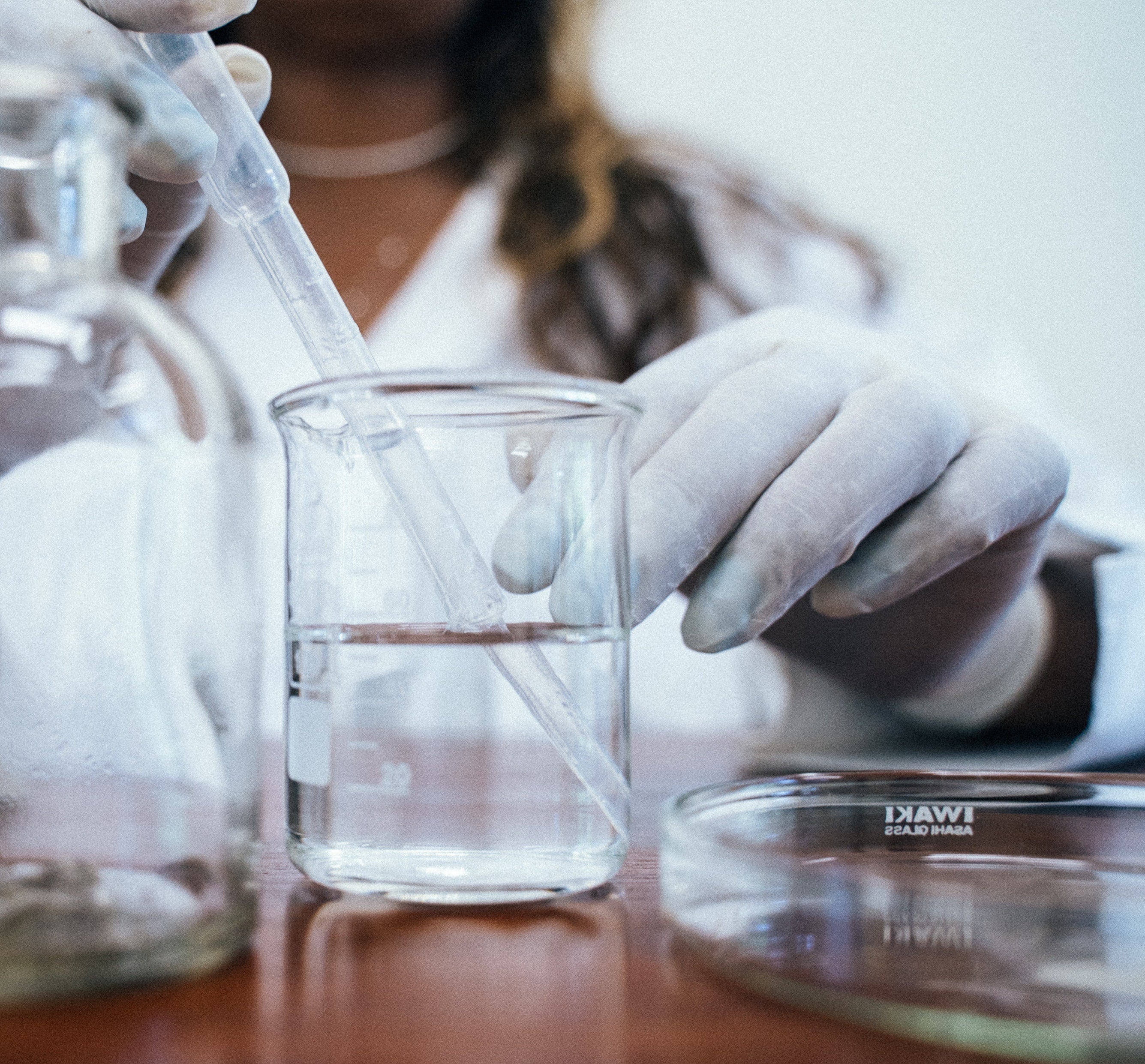
Viscometer Testing
We love liquids. Water, coffee, syrup, shakes. Though they flow freely and have a set volume, liquids do not have a set shape. Some food products and cosmetics may appear solid. However, they contain liquid properties that are vital to customer experience. These products are considered viscoelastic products.
Take butter, cream cheese, and the filling in protein bars as examples. Even gummy bears cannot hide their liquid properties when a bag of them is left inadvertently in the sun on a warm day.
Often, we think of viscosity as a measurement of a liquid’s thickness. We understand honey is a thick fluid, water is not, and oil is somewhere in between.
Consumers associate expected thickness with product thickness. (Do consumers expect cream of mushroom soup to pour from the can or be solidly congealed? Should it require a force beyond gravity to remove it?)
Besides thickness, viscosity determines product texture. (If a topical cream is too thick, its resulting texture may be uncomfortable when applied to the skin. Thick gooey lotion always has me reaching for something to wipe it away with.)
Knowing and perfecting viscosity when manufacturing and packaging liquid and viscoelastic products is key to customer satisfaction, loyalty, and economic success.
What is the Principle of Viscosity?
The viscosity of a fluid is a measure of how quickly adjacent fluid layers move past each other to overcome internal friction.
An applied force starts a liquid to move and change shape. The force applied to the liquid over an area is the shear stress. How fast the liquid flows (velocity) at a given depth is the shear rate. (The scientific definition of shear related to liquids is the tipping point where the liquid begins to move by parallel slippage.)
Viscosity is the shear stress of a liquid divided by its shear rate. The way a liquid moves and its resulting viscosity is temperature and pressure dependent. (Think of the difference between gummy bears on a warm dashboard or ones mixed into a frozen treat.)
Newtonian and Non-Newtonian Liquids
There are Newtonian and Non-Newtonian liquids. Newtonian is simple, and non-Newtonian is complex.
In a Newtonian liquid, the viscosity is independent of the shear rate, making the liquid ideally viscous. It does not matter how much force is applied externally to the liquid; the viscosity remains the same. Examples of Newtonian liquids include water, vegetable oil, and gasoline.

When the viscosity of a fluid changes based on the shear rate, the fluid is classified non-Newtonian. Non-Newtonian liquids do not behave in the same manner. In some, the viscosity drops as the shear rate increases. (For example, stirring yogurt fast causes it to thin.) For starchy solutions, the viscosity increases as the shear rate increases.
Have you ever played with a mixture of cornstarch and water? When you gently pull through the mixture, it acts like a liquid. However, when you increase the speed (or the force), it stiffens up, acting like a solid with a high viscosity.
Dynamic Versus Kinematic Viscosity
Two different viscosity measuring systems were developed early in the 19th century; Dynamic and Kinematic.
Dynamic viscosity measurement was developed by studying the flow time of blood in narrow glass tubes. Different blood flowed at different rates with the same amount of force. French mathematician Jean Leonard Marie Poiseuille concluded that a force must overcome internal friction to allow liquids to flow. Measuring the internal friction based on the amount of force required to make it flow became known as dynamic or absolute viscosity.
Kinematic viscosity measurement was developed by dropping items into different liquids. Irish physicist Sir George Stokes discovered dropping the same thing in various fluids resulted in distinct sinking times. Without referencing the force that causes the motion, Stokes next put different fluids in glass tubes to measure how long it took for the fluid to flow a given distance. This measurement of viscosity through velocity was termed kinematic.
Kinematic viscosity (velocity-based) and dynamic viscosity (force-based) viscosity are related by density.
Dynamic Viscosity = Kinematic Viscosity/Fluid Density
Types of Viscometers
There are several methods to determine the viscosity of a substance. The best type of viscometer for the job depends on the measuring range, single point or continuous sampling, accuracy requirements, and location. All methods require strict temperature control.
- Capillary or U-Tube Viscometers only work for low-viscosity Newtonian liquids. Under the force of gravity, kinematic viscosity is measured by timing how long it takes for the fluid to pass between two points in the capillary tube. Capillary tubes are highly temperature-sensitive. Keeping the capillary tube in a water bath maintains a constant temperature.
- The Bostwick Consistometer and Efflux Cup are simple, quick instruments for use on the processing floor. In these methods, food thickness is measured by how far it flows under its weight or how fast it flows under gravity. These instruments are not suitable for highly viscous fluids or fluids that do not flow well within 30 seconds. Lack of accuracy due to surface tension and fluids that stick to the instrument are additional drawbacks.
- Ball Viscometers, depending on the arrangement, can measure both Newtonian and non-Newtonian fluids. Ball viscometers are simple and reasonably accurate. These viscometers work by dropping a ball in a fluid-filled tube and measuring the time it takes to sink.
- Rotational or Cone and Plate Viscometers are versatile digital viscometers capable of measuring the viscosity of Newtonian and non-Newtonian liquids. Instead of measuring drop time, these viscometers measure the force required to spin a spindle in the liquid at a given speed. Configuration options allow these instruments to measure a wide range of viscosities (pourable liquids to the gel-like filling of protein bars).
Rotational viscometers are well suited for laboratory testing needs. A fluid’s complete viscosity can be graphed by determining its different shear rates by setting different spindle spinning speeds. Additionally, a fluid's temperature dependency can be determined by taking viscosity measurements at altering temperature intervals.
Why Use Viscosity for Manufacturing and Product Quality Control?
Cost-effective viscosity testing is a must in today’s food, dietary supplement, and cosmetic markets. Consumers want high-quality products with desirable and, arguably the most important, consistent characteristics. (Consumers crave the same taste/texture experience every time they purchase the product, regardless if it is tomorrow or next month.)
Viscosity testing helps determine the quality of incoming raw materials. Your product quality is only as high as the materials you use. With raw material viscosity testing, you can cut costs and reject ingredients that do not meet your standards.
Since liquid products are pumped through pipelines, knowing product viscosity at various stages and temperatures keeps manufacturing running smoothly and on schedule. Prevent equipment clogs, ensure complete mixing, and reduce downtime with set-stage viscosity testing.
Before marketing, viscosity testing ensures final product texture and thickness to meet consumer expectations and satisfaction.
CTLA Testing Services
CTLA is a full-service contract manufacturing testing laboratory with ISO/IEC 17025:2017 accreditation. We conduct viscosity testing for beverages, foods, dietary supplements, and cosmetics using a versatile rotational viscometer.
Improve your product manufacturing and quality control to meet consumer demand with routine viscosity testing.
CTLA is dedicated to outstanding customer service and communication. We are open and honest about our testing capabilities, services, and turnaround times.
Benefit from our experience and resources by contacting us today.

Article by Jae O. Haroldsen
The content of CTLA’s website is for information only, not advice or guarantee of outcome. Information is gathered and shared from reputable sources; however, CTLA is not responsible for errors or omissions in reporting or explanation. CTLA gives no assurance or warranty regarding the accuracy, timeliness or applicability of the content.
Sources:
Sahi, Sarab. “Viscosity Measurements in Food Products and Manufacturing.” New Food. 2014. https://www.newfoodmagazine.com/article/15042/viscosity-measurements-food-products/
“The Importance of Viscosity Measurement in Food Production and Processing.” New Food. 2016. https://www.newfoodmagazine.com/news/23734/importance-viscosity-measurement-food-production-processing/
“Viscosity.” Wikipedia. https://en.wikipedia.org/wiki/Viscosity
“Viscosity and Viscometry.” Anton Parr. https://wiki.anton-paar.com/us-en/basic-of-viscometry/
Britannica, The Editors of Encyclopaedia. "shear stress". Encyclopedia Britannica, Invalid Date, https://www.britannica.com/science/shear-stress. Accessed 25 October 2021.
Spoonmore, Keith. “Dynamic vs Kinematic Viscosity: What’s the Difference?” Machinery Lubrication. https://www.machinerylubrication.com/Read/31591/dynamic-kinematic-viscosity







